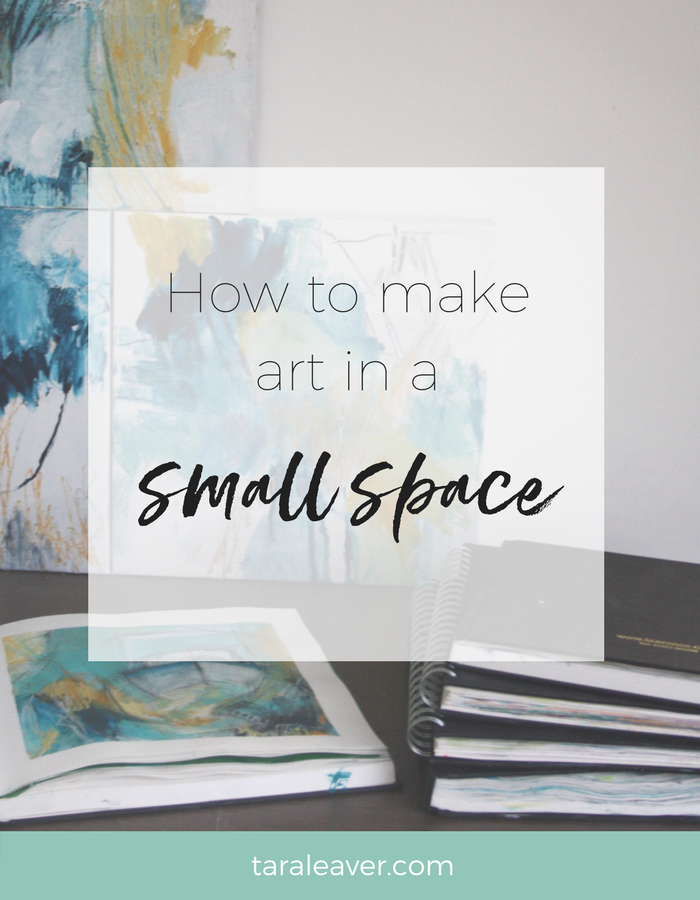
“You must have a room or a certain hour of the day or so, where you do not know who your friends are, you don’t know what you owe anybody or what they owe you. This is a place where you can simply experience and bring forth what you are and what you might be.”
Joseph Campbell
I received an email recently from someone just starting out with her art and wanting to create space for it. Like many of us, she didn’t have a dedicated space and her home is small. Using the kitchen table, and having to unpack and pack up every time, understandably didn’t appeal. {And certainly, the less barriers to entry the better!}
I started on my bedroom floor, gradually and slowly upgrading to my dining table {and floor}, a spare room {and floor – apparently an essential part of my process ;)}, and now my current situation – a studio on the top floor of my home – which is indeed a huge help.
Just know though that a lack of dedicated studio space doesn’t need to have any impact on the quality or quantity of work you can make. Unless you let it. 🙂
With a bit of creative thinking {which you’re already good at} and persistence, there’ll be a workaround you can use until your next upgrade. Perhaps you’re aiming to have your own studio, or waiting for someone to grow up and move out so you can use their room ;), or you’re looking for a shared space, or planning to convert the garage at some point. In the meantime you still need some space of your own to start developing your skills and growing a body of work. Oh, and to do what you love. {Minor detail.}
Setting up a dedicated space for your art sends a message to both you and the universe that says, this is important and meaningful to me, and I want to give it space in my life.
I asked a few artist friends for their advice on establishing a workable art practice in a small space, and they very kindly contributed ideas from their own experiences.
Tips from artists
“I often spend the night at my boyfriend’s house where I just paint on his kitchen table. I find it hard to take everything out and spend the 30 minutes to set everything up. Especially when we use that table to eat dinner. Three things have helped me recently: 1. Bringing my own 4ft folding table. It’s my own space that can be easily taken down. 2. Bringing something that I already have plans for and that I can get excited to do. That way the setting up doesn’t hinder me from making the thing. 3. Only having one bag/box of supplies. Anything more and it just gets even harder to feel motivated to set up.”
“I’ve been working whilst staying in a holiday cottage and needed to keep things clean and neat {not my normal way of working}. I kept everything in a hessian ‘bag for life’ including a thick piece of plastic to work on. I worked standing up at the breakfast bar, looking out of the window, and it was a joy working with just watercolour, pastels and some crayons. No messy paint, no hard decisions about what to use. I don’t know that I could keep it up, but it was a great way to get to know the materials.“
“I typically end up working in my living room on my coffee table {would not do this if I was painting though}… it’s where I am most comfortable and it’s easier to create when I am comfortable…. plus I sometimes use the distraction of the TV to keep my mind from straying too far from the piece in front of me.”
“I am using my kitchen to paint and although I could have access to a better space if I really wanted to, I have found out it helps me to have my painting space right where I am. Because it takes s a lot of time to take out all my materials and as much time to clean and put it back I started using a limited amount of paints, tools etc. This has actually benefited my art as I am more effective if I can choose from 3-4 different tubes than 10. My palette has become more consistent and I am not getting lost in too many color decisions. Before I was longing for a big light studio but now I’m very comfortable in my little kitchen.”
“I actually have a dedicated studio upstairs but often feel like I live only upstairs. I have a small patio I love to paint on – overlooks the mountains. I love plein air, too, so I use my plein air set up downstairs! I am a ‘guerrilla painter’, so I set up my pochade just like I do outdoors. Sometimes I bring it in, throw down a sheet on the floor and finish inside. So my tip for keeping it small is just use your plein air set up wherever you are. And I only use 7 tubes of colour.”
“I didn’t have room to paint so I made room! Moved my PC from the corner of our living room to the bedroom. Little computer desk is now an art station: built in shelves etc great for storing painty bits, finished pieces/paper goes where the PC tower was, and the pull out keyboard shelf is great for propping up paper on. Have an easel next to the desk, and have decided to let the carpet get messy {it was in a horrible state anyway}.”
What I find fascinating about these artist’s descriptions of making art in a small space is that often even those who actually have a larger, dedicated art space somewhere, actually end up in a small corner!
They also reinforce the point that limitation is a cornerstone of creativity, whether that means space, number of paint colours, or tools. Having everything at your disposal is not always what will support your art making process best. Something to bear in mind!
Storage & Tools
Thought I’d add a few suggestions for bits and pieces that can help make small space art easier. Sometimes a bit of outlay can make everything so much easier in the long run, and it can also help to reinforce the idea of you as an artist. {Not to mention, having invested in our art, we are then more likely to do it!}
- The ever popular Ikea Raskog trolley {apparently All The Artists have bought the aqua version, because I couldn’t find it}
- A fold away bureau, like this one also from Ikea – the best way I can think of to leave stuff out but also hide it when you’re done. And if you work small, this fold down table + storage* would be a fab little solution.
- Gumtree or Craigslist, or your local equivalent, may offer affordable storage solutions, like a bureau, baskets etc. Or even Freecycle {or your local equivalent for giving things away or searching for things people are offering free} can throw up unexpected gems.
- Kids storage – the kind of sturdy and deep plastic drawers that don’t need to be kept pristine and will hide all your art shiz when you’re not using it. I’m thinking something like this, or this, which would fit under stairs.
- Baskets – I have quite a few of these. {Great for sorting by type, and easy to rummage in}
- Table top easel – won’t take huge canvases {if you have wall space all you need is a nail or two}, but handy when you don’t want to work flat. Here’s a wee one with a nice sturdy base*, and here’s one* that would be great if you prefer to work on paper.
- Dual purpose supplies, such as Derwent’s Inktense blocks* and Caran d’Ache Neocolors*, both of which can be used wet or dry, are great if you don’t have room for lots of paint. You can always buy just a few tubes or small bottles in favourite colours.
- A folding screen is a quick and attractive way to hide art mess. This one even has a bit of built in storage!
*Starred links in this post are affiliate links.
Extra tips and tricks
- If you have some wall space, you can hang rows of string from nails and use pegs to hold paintings that are drying. Being surrounded by your own work is also a great way to inspire yourself and stay focused.
- A toolbox that expands when you open it is a handy place to keep smaller supplies and packs away small. A quick search on Amazon also threw up this fishing tackle box, which is very cheap!
- Decorator’s drop cloths are cheap and and easy way to keep the floor clean; other possible coverings include shower curtains, old sheets and fabric scraps, or lino or rolls of vinyl flooring which can often be bought cheaply as offcuts in decent sizes. Folding your material to fit a trolley, an easel and you is a handy way to delineate your ‘studio’ space too.
- If you’re using a dark corner or the light is low, consider buying a daylight lamp or bulb just for where you’ll be making art. Yellow lighting is horrible for colour mixing.
- A cupboard or closet that could relinquish at least some of its contents for the sake of your art, and would fit an easel or small table and perhaps some built in shelves, is one way to create a space that you don’t have to tidy up each time.
- Make a vision board for the studio you’d really love to have. Keep it on display in your creative space so you can bring it into your life all the quicker!
- One thing that will make a huge difference to how much you use your creative space is how ‘you’ it feels. So do whatever you can to curate it so it’s enticing to you and feels like home when you’re in it. That might mean creating an inspiration board or wall with inspiring images, or having some specially selected objects that feel meaningful to your work.
Related post: How to create a coffee table art kit
I hope this gives you hope and ideas if you don’t have a lot of room to make your art right now! Please don’t let it stop you from doing any at all. There are always workarounds, and while they aren’t always ideal, they can be enough to keep going while you work towards something more suitable.
It’s amazing how when you make a decision, like giving art at least some space in your life, however small right now, creative solutions present themselves to you and opportunities start to show up.
Do you make art in a small space? Please share any tips that make it easier for you in the comments!

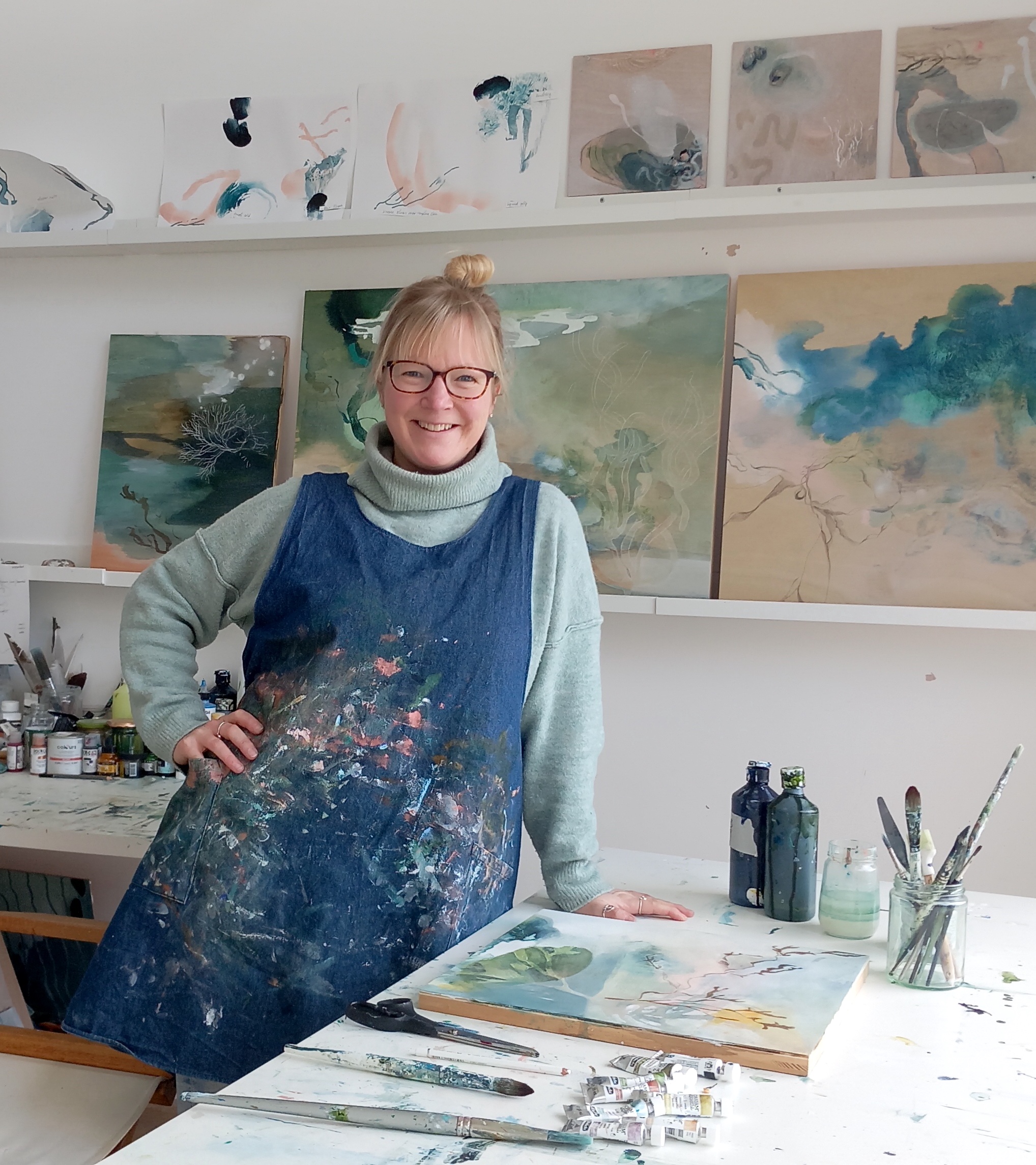
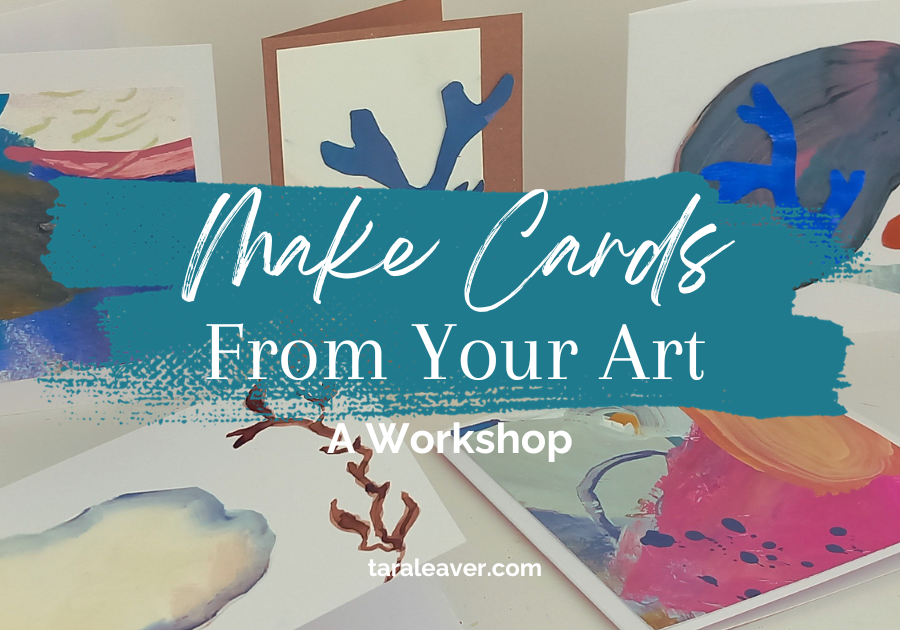
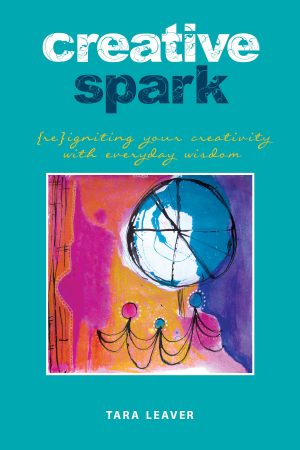

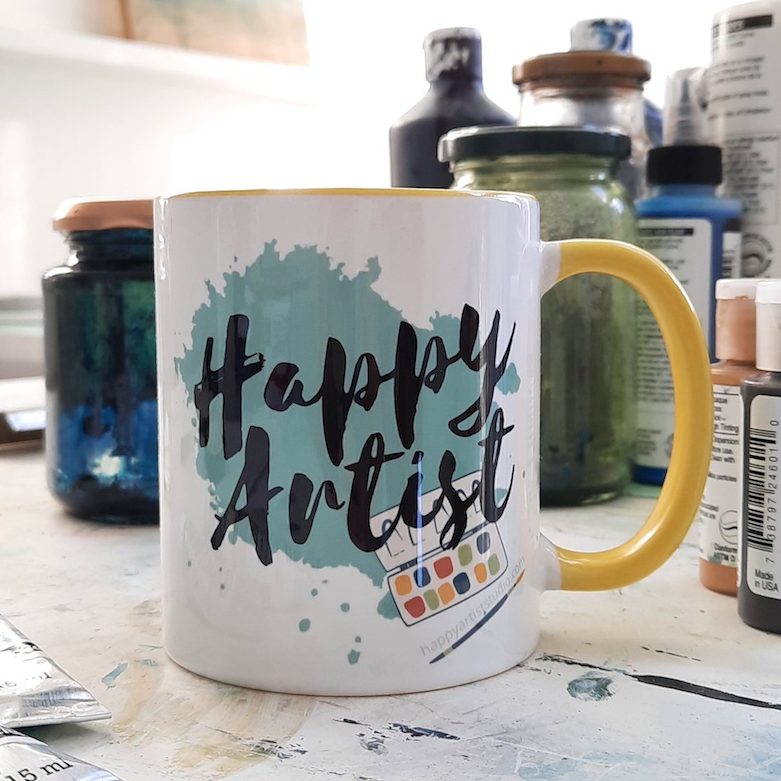

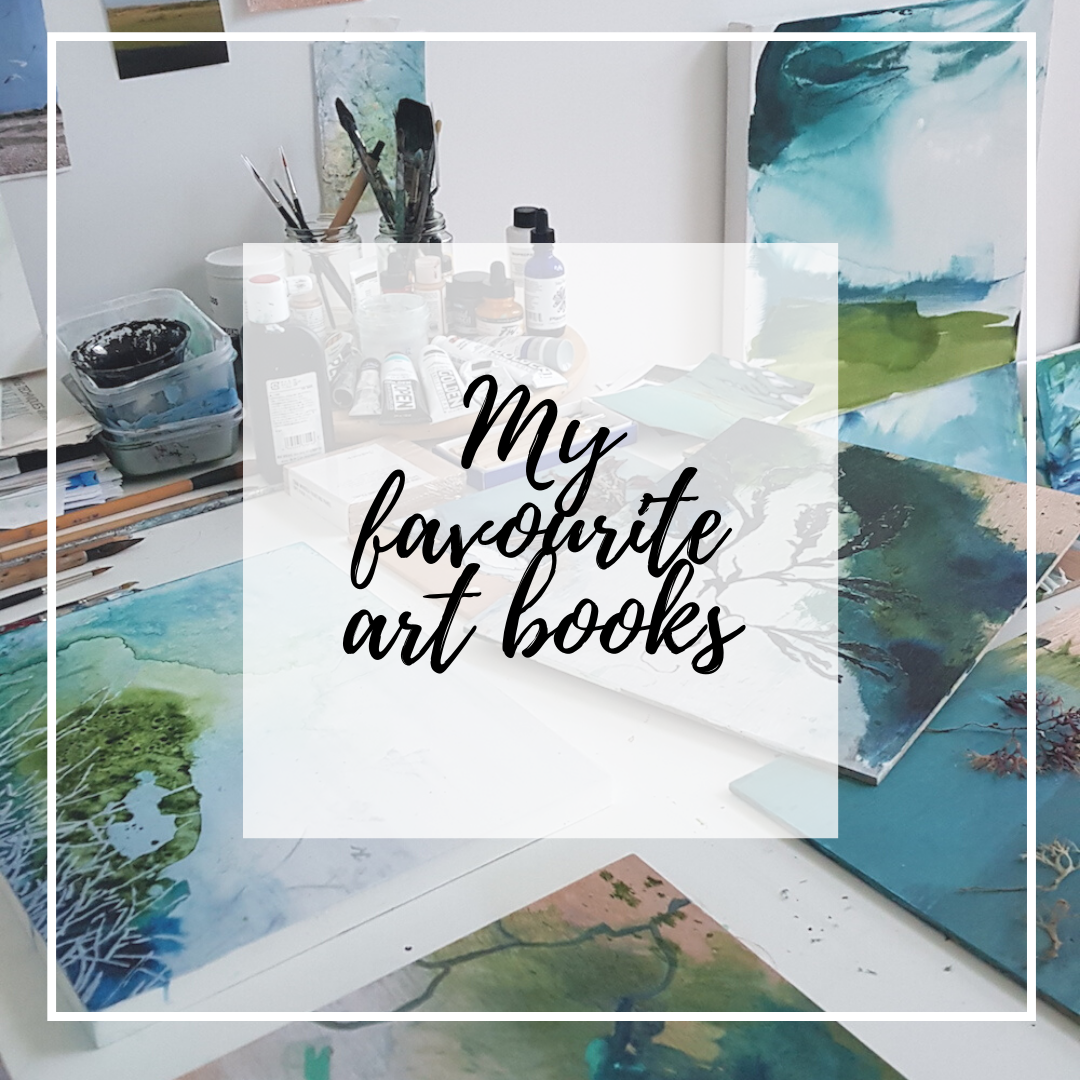
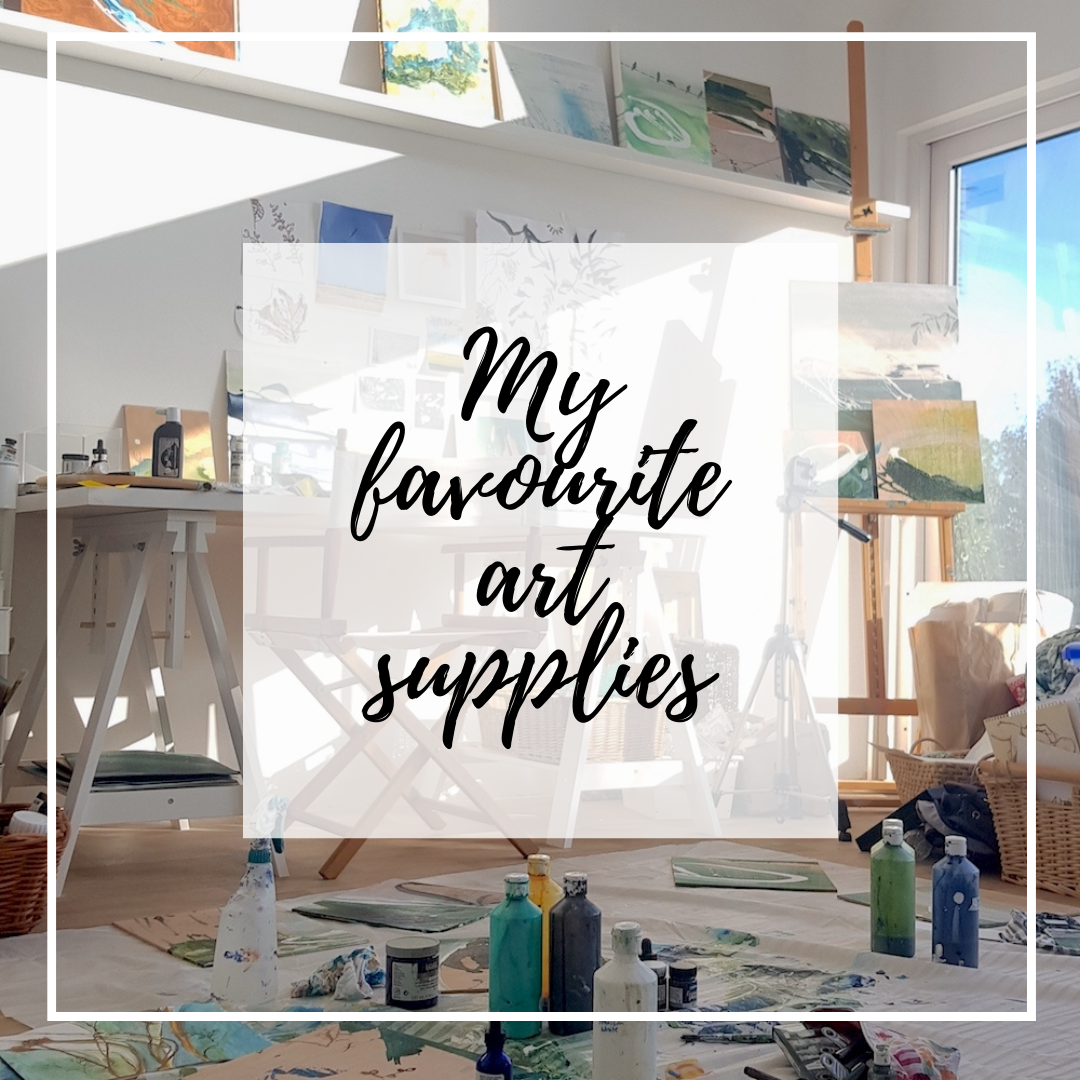

I started sharing the breakfast bar, in the kitchen, with my kids. Great lighting with the downlights. But eventually sequestered half of our spare room, for a studio. It just made it easier, not to have to pack up everything from the kitchen.
I can vouch for the bureau, and we found ours for $5 at the second-hand shop. It fits a lot of stuff, and when you’re done, you just lift up the door and the mess disappears. I also have a folding box, with shelves that lift out, both ways – like an accordion stair case. I fit a lot of stuff in there too.
Even though I have a studio, it’s still only half a spare room, so those bits above really help cram it in – while still (remarkably) making it accessible.
My dearest Tara,
This morning I read your blog about the “daemons” that creative brains produce to harass, belittle and create barriers and excuses for not moving boldly forward. Your work and dedication to supporting Artists is inspirational. You have a depth of spirit and compassion that is rare in our current world reality.
Thank you, You are a true healer.
Victoria
Thank you for the kind words Victoria!
Great ideas! I’ve been tempted to build a little studio in the backyard for art and writing, but being a simple soul, choose to use what space I have at the kitchen table looking out onto our garden. I love my rolling 3 bin cart. I follow a “use what I have in my hand” philosophy.
Thank you for great tips! I also have a small space at home. When I decided to have my artspace, I painted the wall with white color near my table and put 2 shelves above. There are my works and lovely things that inspire me.
Tara, thank you very much for your blog! It’s a home for inspiration and experiment!
Love that idea of the shelves for things that inspire you! It sounds like a lovely space. Thank you for the kind words – glad to be useful. 🙂
Hola Tara, soy Gloria Esteva de Díaz, de Maracay, Venezuela. Encantada y feliz de haber encontrado tu blog pues estoy muy entusiasmada con la pintura, aunque a veces pienso que no tengo muchas aptitudes, pero continúo ¨haciendo¨ algo todos los días.
He tomado una parte de nuestro salón de ver tv para hacer mis pinturas y manualidades… Soy feliz de hacer esto, y seguiré haciéndolo SIEMPRE. Saludos desde VENEZUELA
Welcome Gloria! Happy to hear you’re following your dream!